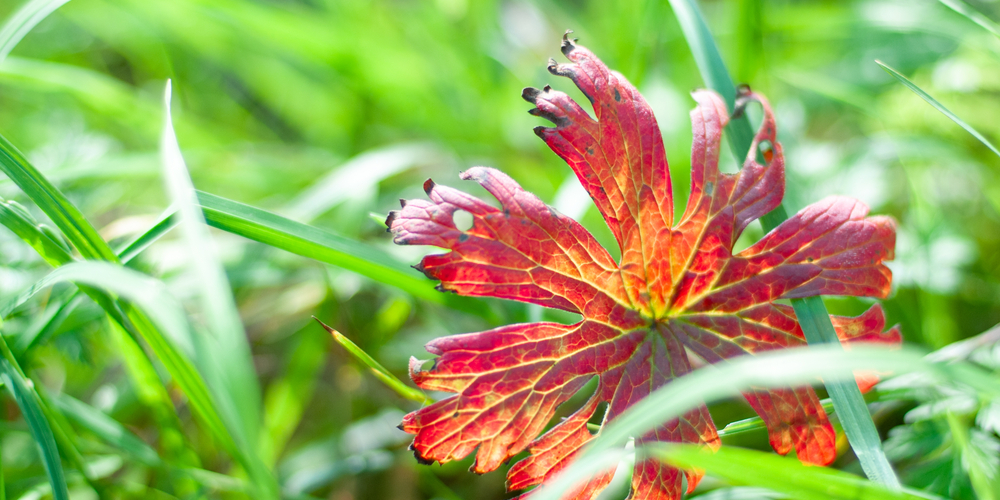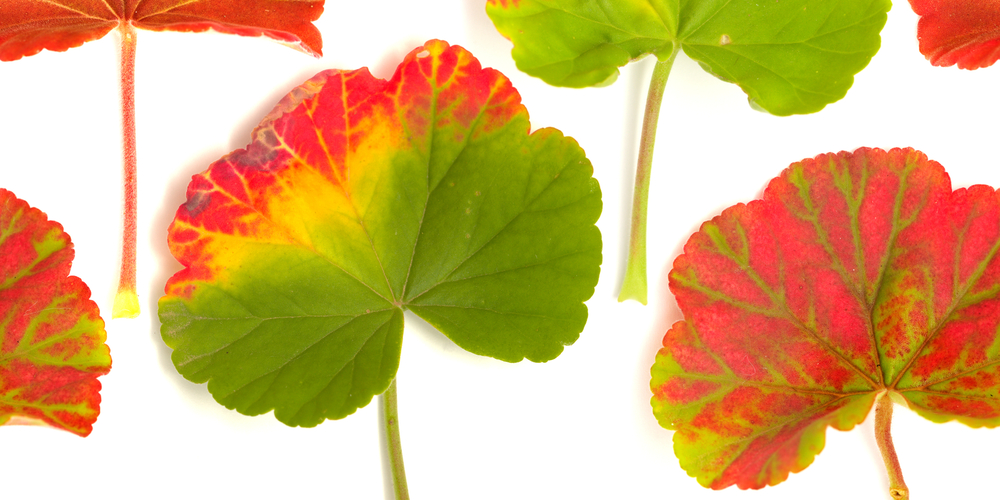Prudent gardeners often get clues about the well-being of their plants by simply observing the leaves. For geranium gardeners, red spots on the leaves are a cause of concern, even though other people may find the red spotting attractive.
When geranium leaves start to turn red or brown, they are obviously straining or suffering from certain deficiencies.
Generally, the main cause of red geranium leaves is stress, which commonly affects them in fall and spring. While geraniums are hardy perennials of zone 10-11 plants because of their love for hot temperatures, they will suffer drought when the daytime temperatures get extreme.
In cooler regions, geraniums are planted as annuals because they get affected by the cool temperatures and low soil pH in such zones.
All the same, no matter your planting zone, red spots on geranium leaves are a cause for alarm, and gardeners need to identify what is stressing the plants and find solutions to the street. This article will cover the causes of stress and their remedies in geranium plants.
Causes of red leaf spots/ stress in geranium plants
Here are a few causes of stress in geranium plants that make the plant leaves develop red spots.
1. Temperature fall
In spring and fall, geranium leaves may turn red because the temperature drops and gets lower than what the plants can tolerate. Typically, temperatures below 10 degrees Celsius will cause stress in geranium plants, and the leaves will eventually start to change color. Frost can also kill geraniums.
2. Dropping of soil pH level
Geraniums do well in slightly acidic soils with a pH of about 5.8 for zonal geraniums to 6.3 for ivy, regal, and other geranium varieties. When the pH drops below this level, high acidity becomes toxic to the plants, and they start showing their street through the red leaves.
3. Nutrients deficiency
Phosphorus deficiency causes the veins of geranium plants to turn reddish-brown. Anytime you see green leaves with red or brown veins, it is a clear indicator that the plant is not getting an adequate phosphorus supply.
For many plants, nitrogen deficiency can be identified by leaves turning yellow. However, due to differences in leaf pigmentation in geranium, some varieties will develop red coloring on leaves when there is a minimum nitrogen supply.
4. Poor hydration
Dry roots in geranium are usually brought about by a lack of adequate water for the plant. To signal the plant owners, the leaves turn red and might fall off. If you are sure that your plant has adequate nutrients, proper soil pH, and temperatures are hot, yet the leaves are still turning red, it is the right time to check on plant hydration.
5. Fungal infection
A fungal infection, commonly referred to as geranium leaf rust, causes red-brown lesions on the underside of the leaves. Apart from turning brown, you may notice powder-like red to brown pores on the underside of the leaves as the disease progresses.
Identifying fungal infection on geranium leaves is easy because it only makes red spots or rings but does not decolorize the entire leaf.
How to protect your geranium from developing red leaves
Geranium leaves turning red is a condition that can be prevented or, rather, rectified in the early stages. Try the following activities to protect the plant’s leaves from turning red.
1. Ensure the soil is moist
Geranium plants do not need a lot of water to maintain their healthy state. However, when they lack water, their roots dry up, and the leaves turn red; when they get too much water, they develop root rot, and the leaves turn yellow.
To be safe, add small amounts of water to the ground or add a thin layer of mulch to help control soil humidity.
2. Measure soil pH
Although rarely done by a few gardeners, determining the soil pH will help identify when it is dropping and save your plants by altering the soil pH using fertilizers.
3. Apply fertilizers to the plants
Applying nitrogen and phosphorus-based fertilizers will help deter leaf reddening caused by inadequate nutrients.
4. Protect plants indoors during cold seasons
During fall, it is wise to prune back the plants and take them indoors before the overwinter cold hits. In spring, wait until the last frost drops before getting your ¹plants outside.
In case they get affected by the cold temperature of early spring, the leaves will start healing and change to green as the temperatures rise.
Geranium Leaves Turning Red: Conclusion
Geranium leaves turning red is a cause of alarm to its gardeners. For this reason, identifying the exact cause of red leaves will help you save the plants from stress.
Hopefully, this article will help you identify the cause of geranium stress and how to lower the stress.
Related Article: Do Deer Eat Geraniums?

